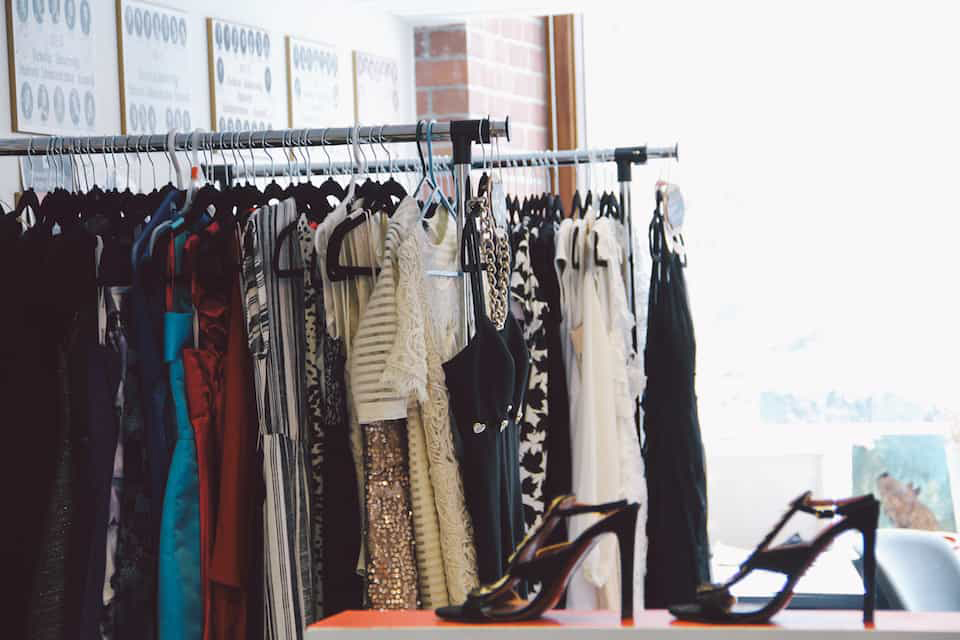Content warning: This article mentions rape threats.
Women’s appearances have been a controversial topic for a long time. Whether it’s through articles about redefining modest women’s wear, reports on how religious garments preserve cultural meaning, or commentators drooling over celebrities’ dresses at red carpet events, women’s appearances are often center stage — usually when we don’t want them to be.
Recently, I’ve thought more about the marketing and expectations surrounding women’s clothing in comparison to men’s. Though my observation is far from over, I already have a lot to say.
Hypersexualization and restriction
There’s a phrase that says, “She’s a pearl among women.” It is used to refer to someone who is “valued.”
Though it may be intended as a compliment, I interpret the phrase to mean that women are perceived as more ‘valuable’ than other genders and must often be safeguarded from others. This theory is backed by societal norms — the dress codes of some workplaces and schools prohibit the exposure of women’s thighs or shoulders. In contrast, men are often not reprimanded for showing these body parts, which contributes to the sexualisation of female-presenting bodies.
Most shockingly, women’s clothing can restrict our bodies’ movement. A study by the Body and Media Lab at Northwestern University found that women are more likely than men to wear clothing that’s painful, distracts them, or restricts their movement. One example is the high heel — from the fifteenth to the seventeenth century, women in Europe would wear shoes with heels as high as three feet. Because they were unable to move while wearing them, they would support themselves with either walking sticks or human escorts.
What caused the problem?
Traditionally, men have been telling women what to wear for thousands of years. But why are we going along with it?
Natural parts of women’s bodies are often seen as shameful. Take body hair, for instance: it’s not fair that women are traditionally brought up to believe that it’s unfeminine and unattractive. Some have even received death and rape threats for showing it. Meanwhile, it’s socially acceptable for men to show body hair, which supports the policing of women’s bodies.
And then there’s the term ‘empowerment.’ Though women should be empowered, we’re often told that we should feel empowered through clothing choices such as push-up bras and bodycon dresses, or through full-body veils and hair coverings. Some argue that the recent widespread women’s sexual empowerment movement — though intended to free us from the expectations of modesty — has only reinforced a male-centric beauty standard for all, stripping us of the vocabulary to pursue our own sexual interests. Its alternative — to dress ‘modestly’ by covering our bodies — is no better; it can be argued that ‘modest’ clothing links women’s value and respectability to how much of their body they choose to cover.
The solution: wearing men’s clothes
So, what’s our solution? Here is what I suggest: unironically wearing only men’s clothes. Though the take may seem controversial, the practice is already widespread — around 64 per cent of women have worn men’s clothes before.
There’s nothing inherently feminine or masculine about either type of clothing. But the way that clothes have been categorized for each gender has unknowingly affected our lifestyles.
A baby step to embrace this challenge is ‘Octieber,’ a month-long “celebration of quality neckwear worn in a traditional style.” Taking place in October, it encourages people of all genders to wear a tie every day for a month. Though I haven’t participated before, I’ve noticed that I regularly spend more time on my appearance than I want to, so I’m open to the challenge of committing to the garment.
As an alternative, you could jump right in and start looking to the men’s section for your clothing. You’ll save money if you do — the term ‘pink tax’ refers to the documented phenomenon where products and services marketed toward women have a higher price than analogous products and services marketed toward men.
By wearing men’s clothing, we are not abandoning femininity. We are redefining it, and are extending its boundaries to include the clothing preferences of all women. We’re taking back our comfort, confidence, and mobility.
But, most importantly, we’re boycotting designs that oftentimes treat us like mannequins, not people.
If you or someone you know has been affected by sexual violence or harassment at U of T:
- Visit safety.utoronto.ca for a list of safety resources.
- Visit svpscentre.utoronto.ca for information, contact details, and hours of operation for the tri-campus Sexual Violence Prevention & Support Centre. Centre staff can be reached by phone at 416-978-2266 or by email at [email protected].
- Call Campus Safety Special Constable Service to make a report at 416-978-2222 (for U of T St. George and U of T Scarborough) or 905-569-4333 (for U of T Mississauga)
- Call the Women’s College Hospital Sexual Assault and Domestic Violence Care Centre at 416-323-6040
- Call the Scarborough Grace Sexual Assault Care Centre at 416-495-2555
- Call the Assaulted Women’s Helpline at 866-863-0511


